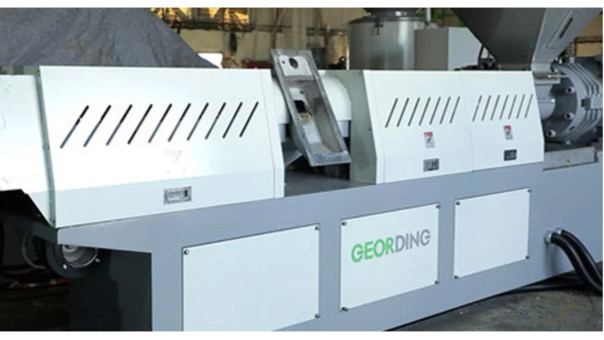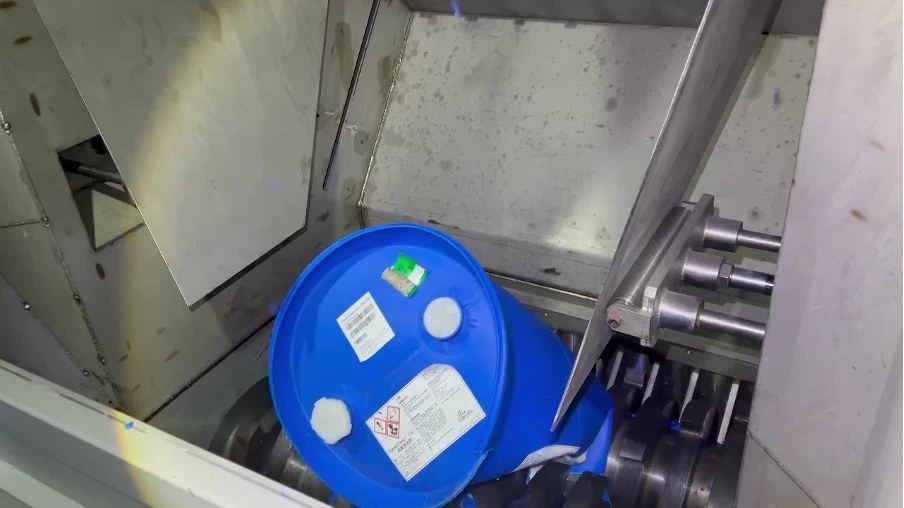Chemical drum recycling poses some of the toughest challenges in plastic waste management—from thick-walled, hard-to-melt HDPE to residual contamination and cylindrical geometry that causes jamming. Standard recycling machines often fall short when processing these drums, especially in industries like chemicals or semiconductors where safety and precision are critical.
This article explores how smart HDPE recycling system design—from custom screws to corrosion-resistant washing modules—provides targeted solutions that overcome these obstacles and transform complex waste into valuable resources.
Want to understand how advanced systems handle different types of rigid plastics? Explore our guide to HDPE Recycling Machines designed for complex waste streams. You can also discover how Advanced Plastic Recycling Production Lines integrate modular design and automation to meet diverse processing needs.
Why Chemical Drum Recycling Is So Difficult
HDPE chemical drums are widely used in agriculture, chemicals, and semiconductor manufacturing, but they come with several challenges:
-
High Wall Thickness:
Industrial-grade drums are built to resist impact, pressure, and chemical erosion, making them extremely difficult to shred and melt. -
Residual Contamination:
Chemical residues inside barrels require deeper and safer washing processes. -
Cylindrical Geometry:
Round containers tend to jam or rotate in standard shredders, causing downtime. -
Complex Melt Behavior:
Some HDPE grades used for chemical storage have poor flow properties, requiring precise thermal and pressure control.
These features demand more than a standard recycling line—they require a machine tailored for hard-to-process HDPE waste. If you’d like to learn more about the core equipment and workflows behind effective plastic recycling, see our introduction to the Plastic Recycling Line and how it streamlines waste into valuable material.
To overcome the above difficulties, advanced HDPE recycling systems integrate design innovations that directly address the material and mechanical challenges.
Smart HDPE System Design Features That Overcome Chemical Drum Recycling Challenges
Advanced HDPE recycling systems have evolved to meet these needs with the following design features:
-
Angled Shredder Design:
Modified inlet angles and gripping rollers enable stable feeding and cutting of cylindrical barrels. -
Corrosion-Resistant Washing Systems:
Stainless steel tanks, chemical-proof seals, and multi-stage washing cycles help remove stubborn residues safely. -
Custom Screw Geometry:
Screws designed in-house are tuned for high-melt-viscosity HDPE, ensuring consistent pressure and pellet quality. -
CO2 Monitoring Modules:
Some machines now include smart control systems that track real-time energy use and carbon emissions per kilogram of output—ideal for clients needing ESG data or PCR HDPE certification.
Here are two real-world examples of how such systems have delivered measurable results in challenging chemical drum recycling projects.
Real-World Success Cases in Chemical Drum Recycling
Case 1: Japanese Industrial Cleaner – From Hazardous Waste to Recycled Resource
A Japanese company specializing in industrial cleaning generated large volumes of HDPE chemical drums previously used for transporting degreasers and solvents. These drums were classified as hazardous waste due to residue contamination and were costly to dispose of. Geording worked with their waste processing partner to install a modified HDPE recycling line, equipped with a triple-stage washing system and a filtration-ready screw. This allowed the drums to be safely cleaned, melted, and pelletized—turning a disposal cost into a revenue-generating stream of PCR HDPE suitable for non-contact applications.
Case 2: South American Packaging Supplier – Circular Use of In-House Chemical Barrels
A South American manufacturer of HDPE-based industrial packaging sought to implement circular practices by recycling their in-house chemical barrels used in raw material storage. Their original equipment lacked the screw strength and barrel grip needed for consistent operation. Geording designed a mid-capacity line with a pressure-adjustable extruder and reinforced barrel feeding system. With the upgrade, the company now closes its production loop, internally reusing recycled HDPE for secondary product lines like heavy-duty transport trays.

Let’s Build Your Custom HDPE Recycling Solution
The challenges of chemical drum recycling are real—but so are the solutions. With smart HDPE system design, recyclers can overcome even the most difficult obstacles, from thick walls and poor melt flow to complex geometries and contamination.
As we've seen, it’s not about using more power—it’s about using the right engineering. Geording’s expertise in custom screw geometry, intelligent shredding systems, and ESG-ready monitoring gives processors the tools to turn hazardous waste into a valuable PCR resource.
Facing your own drum recycling challenges? Let’s build a tailored, high-performance solution together. Contact Us Today!
